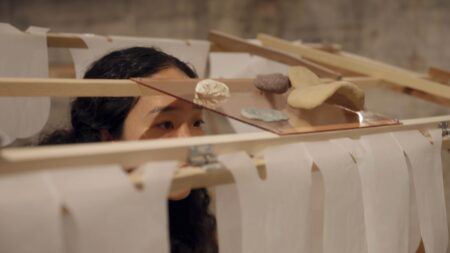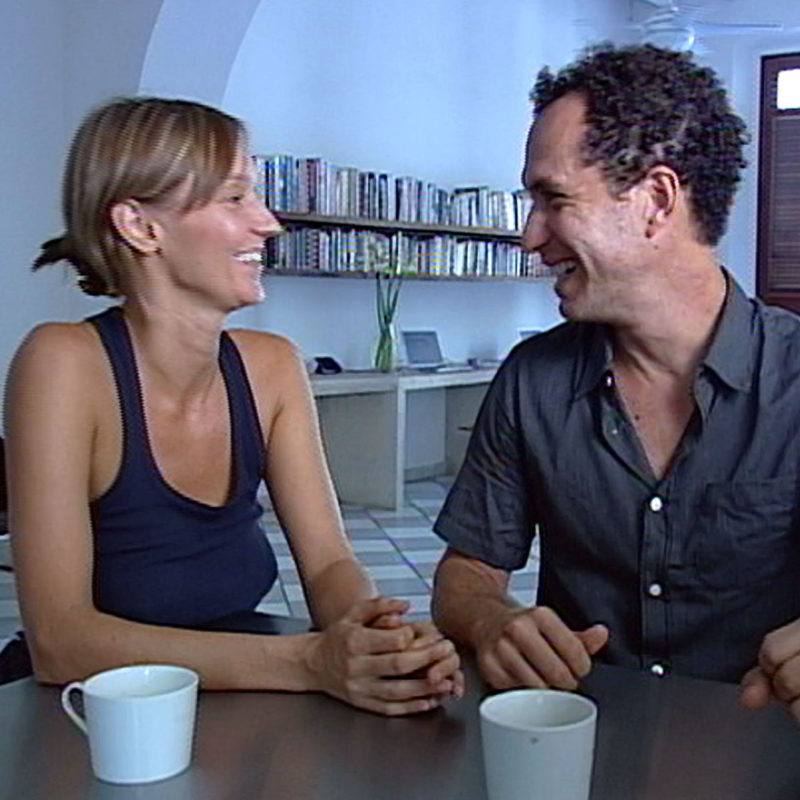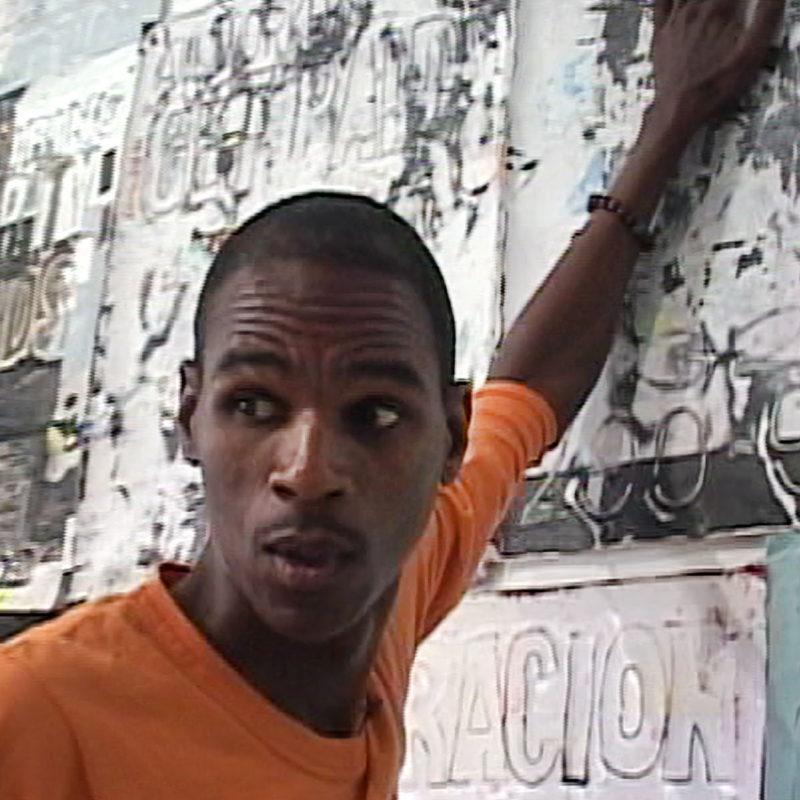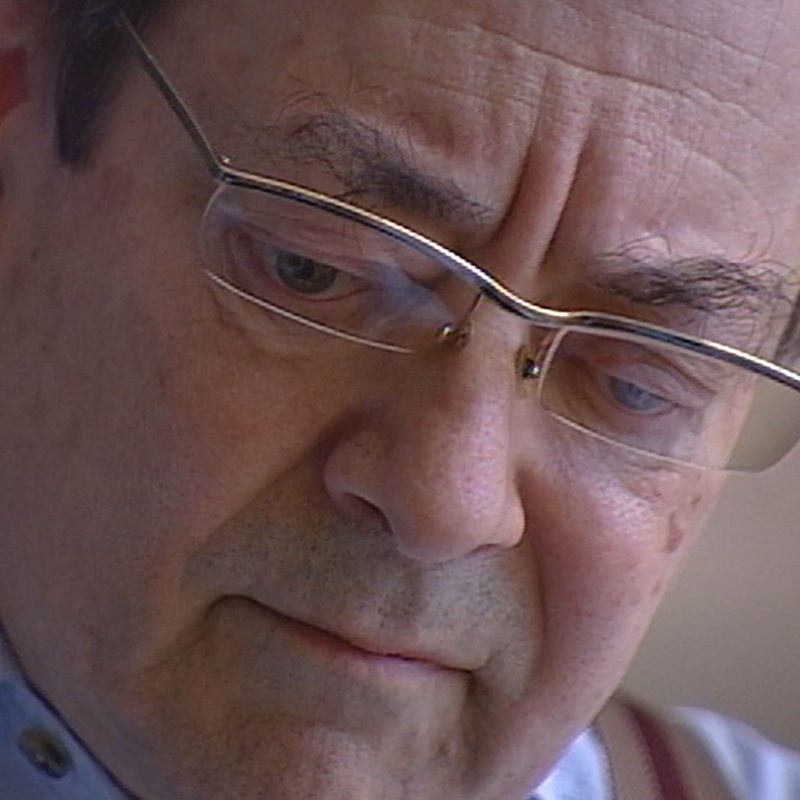Continue playing
(Time remaining: )
Play from beginning
Continue playing "{{ controller.videos[controller.getVideo(controller.currentVideo)].segmentParentTitle}}"
{{controller.videos[controller.getVideo(controller.currentVideo)].title}} has ended.
Paradox
The artists in this episode investigate the boundaries between abstraction and representation, fact and fiction, order and chaos. Creating juxtapositions that are at times disorienting, playful, and unexpected, these artists engage with the uncertain and plumb accepted assumptions of meaning in art.
Paradox was shot on location in New York, New York; Philadelphia, Pennsylvania; Los Angeles, California; Chicago, Illinois; Miami, Florida; San Juan, Puerto Rico; São Paulo, Brazil; Warsaw, Poland; Paris, France; and Avignon, France.
More information and creditsCredits
Created by: Susan Sollins & Susan Dowling. Executive Producer & Curator: Susan Sollins. Series Producer: Eve-Laure Moros Ortega. Associate Producer: Migs Wright. Associate Curator: Wesley Miller. Production Manager: Alice Bertoni & Nick Ravich. Production Coordinator: Amanda Donnan & Meredith Klein. Consulting Director: Charles Atlas. Editor: Monte Matteotti. Director of Photography: Terry Doe, Bob Elfstrom, Mark Falstad, Mead Hunt, Joel Shapiro, & Abdiel Vivancos. Additional Photography: Rodrigo Menck, Nick Ravich, Miguel Sanchez-Martin, & Sergio Zeigler. Sound: Tom Bergin, Ray Day, Ron Garson, Heidi Hesse, Henry Lopez, Roger Phenix, Adilson Tatu, & Merce Williams. Audio Technician: Nick Baumhardt & Drew Weir. Assistant Camera: César Caldas, Luke Deikis, Craig Feldman, Brian Hwang, Agnes Jammal, & Michael Pruitt-Bruun. Field Producer: Glenn DuBose & Mariana Valdrighi Amaral. Production Assistant: David Gonzalez, Steve Lynn, Justyna Rutkowska, & Edward Shen. Additional Animation: Joaquin Perez.
Creative Consultant: Ed Sherin. Art Direction & Design: Open, New York. On-Line Editor: Don Wyllie. Composer: Peter Foley. Voice-Over Artist: Jace Alexander. Sound Editing: Margaret Crimmins & Greg Smith. Sound Mix: Cory Melious & Tony Volante. Animation Stand: Frank Ferrigno. Assistant Editor: Ahmed Amer, Jennifer Chiurco, & George Panos.
Artworks Courtesy of: Jennifer Allora & Guillermo Calzadilla; Mark Bradford; Robert Ryman; Catherine Sullivan; Galerie Chantal Crousel, Paris; Galleria Gio’ Marconi, Milan; Metro Pictures, New York; The Moore Space, Miami; PaceWildenstein, New York; The Pennsylvania Academy of Fine Arts, Philadelphia; & Sikkema Jenkins & Co., New York. Archival Footage Courtesy of: Jennifer Allora & Guillermo Calzadilla; & Mark Bradford. Archival Photographs Courtesy of: Sidney B. Felsen, Gemini G.E.L, Los Angeles.
Special Thanks: Carlotta Arlango; The Art21 Board of Trustees; Carlos Avendano; Alexander Baker; Amy Baker Sandback; Joanna Baranowska; Larry Becker; Bienal de São Paulo; Monique Birault; Lara Blanchy; Stephen Bozler; Ellie Bronson; Laurie Butler; Pat Casteel; Collection Lambert, Avignon; Elodie Collen; Dog Bark Sound; Susan Dunne; Frame:Runner NYC; Hilda Frontanes Suarez; Arne Glimcher; Pascal Guillermin; Carolin Hochleichter; Michael Jenkins; Jennifer Joy; Silvia Karman Cubiñá; Barbara Katus; Meredith Klein; My Linh Miles; Los Angeles County Museum of Art; Dominic Mercier; My Linh Miles; Mobile Academy, Warsaw; Patches Sound; Cheryle Robertson; Amy Baker Sandback; Mônica Shiroma de Carvalho; Sound Lounge; Alessandro Thompson; Vagabond Audio; Tennia Williams; James Woodward; Steve Wylie; & Ibett Yáñez.
Director of Education & Public Programs: Tana Hargest. Education Consultant: Jessica Hamlin. Manager of Public Programs & Outreach: Kelly Shindler. Web Producer: Ana Otero. Senior Development Officer: Beth Allen. Development Associate: Sara Simonson. Development Coordinator: Erin Cesta & Katherine Payne.
Interns: Stephanie Abraitis, Alex Agnant, Gabriella della Croce, Nora Herting, Milena Hoegsberg, Rives Kitchell, Katie McCurry, Simone Otenaike, Karoline Pfeiffer, Nick Pozek, Carolina Puente, Muña Qamar, Bettina Riccio Henry, Meg Scally, Karen Seapker, Peter Sebeckis, Lucy Strong, & Kelly Williamson.
Public Relations: Goodman Media International. Station Relations: De Shields Associates, Inc. Legal Counsel: Albert Gottesman. Bookkeeper: Marea Alverio-Chaveco & Valerie Riley. Travel Agent: Lita Gottesman.
Major underwriting for Season 4 of Art in the Twenty-First Century is provided by National Endowment for the Arts, PBS, Agnes Gund and Daniel Shapiro, Nathan Cummings Foundation, Bloomberg, The Andy Warhol Foundation for the Visual Arts, The Horace W. Goldsmith Foundation, Bagley Wright Fund, and W.L.S. Spencer Foundation.
Closed captionsAvailable in English, German, Romanian, Italian, Japanese, Korean, Chinese, Italian
Through the Art21 Translation Project, multilingual audiences from around the globe can contribute translations, making Art21 films more accessible worldwide.
Interested in showing this film in an exhibition or public screening? To license this video please visit Licensing & Reproduction.
Collaborating since 1995, Allora and Calzadilla approach visual art as a set of experiments that test whether ideas such as authorship, nationality, borders, and democracy adequately describe today’s increasingly global and consumerist society. Their hybrid works—often a unique mix of sculpture, photography, performance, sound, and video—explore the physical and conceptual act of mark-making and its survival through traces. By drawing historical, cultural, and political metaphors out of basic materials, Allora and Calzadilla’s works explore the complex associations between an object and its meaning.
Catherine Sullivan’s anxiety-inducing films and live performances reveal the degree to which everyday gestures and emotional states are scripted and performed, probing the border between innate and learned behavior. Sullivan’s appropriation of classic Hollywood filming styles, period costumes, and contemporary spaces such as corporate offices draws the viewer’s attention away from traditional narratives and towards an examination of performance itself. Unsettling and disorienting, Sullivan’s work oscillates between the uncanny and camp, eliciting a profound critique of “acceptable” behavior in today’s media-saturated society.
Mark Bradford transforms materials scavenged from the street into wall-size collages and installations that respond to the impromptu networks—underground economies, migrant communities, or popular appropriation of abandoned public space—that emerge within a city. Drawing from the diverse cultural and geographic makeup of his southern Californian community, Bradford’s work is as informed by his personal background as a third-generation merchant there as it is by the tradition of abstract painting developed worldwide in the twentieth century. Bradford’s videos and map-like, multilayered paper collages refer not only to the organization of streets and buildings in downtown Los Angeles, but also to images of crowds, ranging from civil rights demonstrations of the 1960s to contemporary protests concerning immigration issues.
Robert Ryman’s work explodes the classical distinctions between art as object and as surface—between sculpture and painting, between structure and ornament—emphasizing instead the role that perception and context play in creating an aesthetic experience. Ryman isolates the most basic of components (material, scale, and support), enforcing limitations that allow the viewer to focus on the physical presence of the work in space. Since the 1950s, Ryman has used primarily white paint on a square surface while harnessing the nuanced effects of light and shadow to animate his work. Neither abstract nor entirely monochromatic, Ryman’s paintings are paradoxically “realist” according to the artist’s own lexicon.
“I thought the painting should just be about what it’s about… In all of my paintings, I discover things. Sometimes I’m surprised at the result, but I know what I’m doing.”
Robert Ryman




